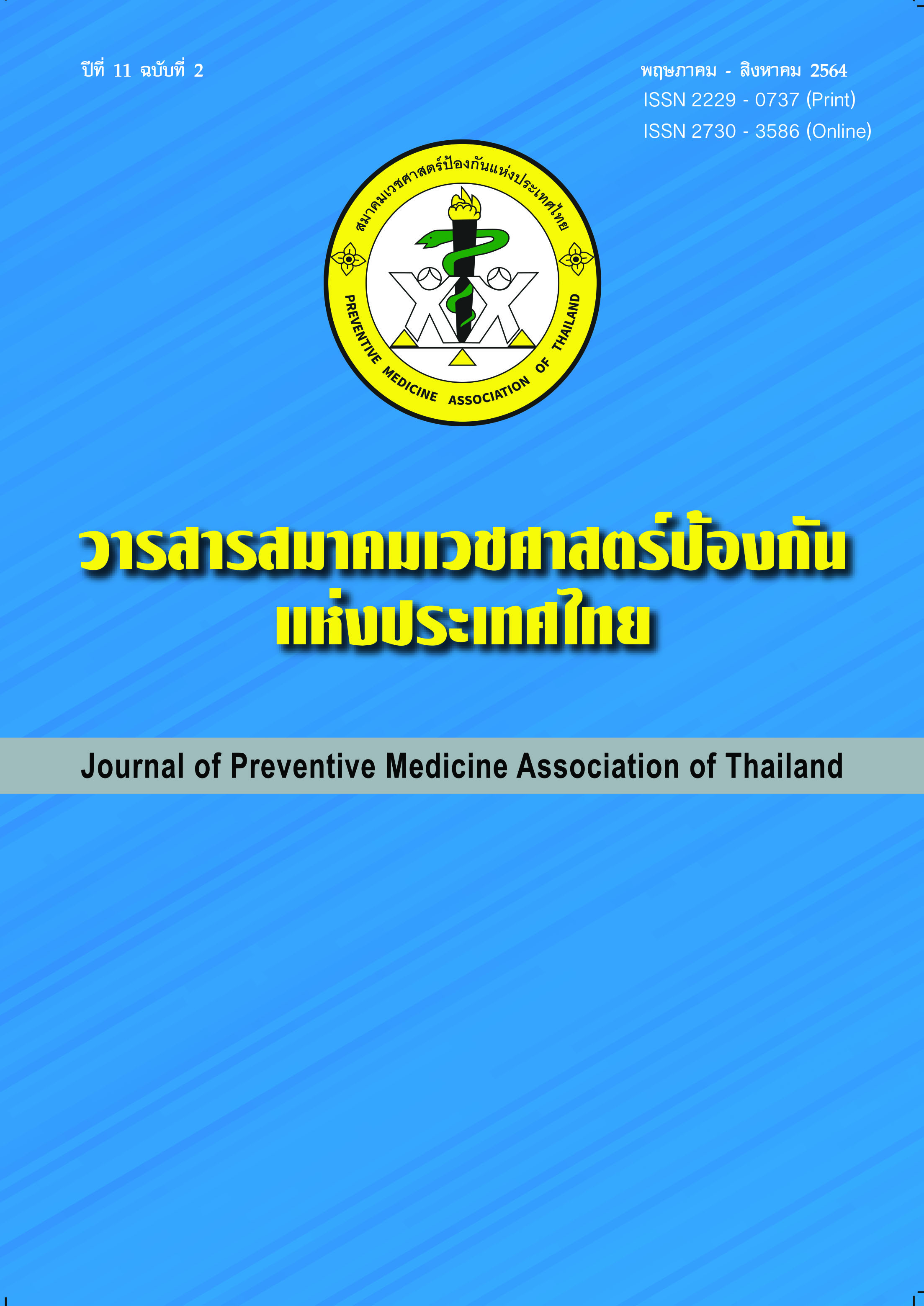Emotional Labor and Burnout in Nursing Profession
Keywords:
burnout, emotional labor, nurse, Ego-depletion theoryAbstract
Nursing profession is a profession that requires to be performed in accordance with the professional standard and expectations of the society. In addition to the use of physical strength to perform duties during office hours and overtime, nurses also have to use emotional labor to interact with their visitors. There are two types of emotional labor or the control of feelings at work including surface acting and deep acting. Although both types of strategies provide the same results, the uses of emotional resources are varied. Surface acting consumes more emotional resources than deep acting according to the theory of ego depletion. Therefore, if emotional labor is at an optimal level, it will be beneficial to nurses, patients, and hospitals. On the contrary, if emotional labor is at a too high level, it can lead to burnout eventually.
References
Maslach C. Burnout in health professionals. In: Baum A, McManus C, Weinman J, Wallston K, West R, Newman S, et al., editors. Cambridge Handbook of Psychology, Health and Medicine. 2ed. Cambridge: Cambridge University Press; 2007. p. 427-30.
ดุษฎี อุดมอิทธิพงศ์, กฤตนัย แก้วยศ, เกยูรมาศ อยู่ถิ่น. ความเหนื่อยล้าในการทำงานของพยาบาล. วารสารสถาบันจิตเวชศาสตร์สมเด็จเจ้าพระยา 2019;8:40-53.
Woo T, Ho R, Tang A, Tam W. Global prevalence of burnout symptoms among nurses: a systematic review and meta-analysis. J Psychiatr Res 2020;123:9-20.
Maslach C, Schaufeli WB, Leiter MP. Job burnout. Annual Review of Psychology. 2001;52:397-422.
Pines A, Aronson E. Career burnout: causes and cures. New York, US: Free Press; 1988. 257 p.
Brill PL. The need for an operational definition of burnout. Fam Community Health. 1984;6(4):12-24.
Schaufeli WB, Leiter MP, Maslach C. Burnout: 35 years of research and practice. Career Development International. 2009;14:204-20.
สงวน ลือเกียรติบัณฑิต. อาการเหนื่อยหน่ายในการทำงาน: การวิจัยในประเทศไทย สาเหตุ และผลที่ตามมา. วารสารสงขลานครินทร์ ฉบับสังคมศาสตร์และมนุษย์ศาสตร์ 2542;5:281-97.
Hochschild AR. The managed heart commercialization of human feeling, twentieth anniversary edition, with a new afterword. 2ed: University of California Press; 2003. 327 p.
Ashforth BE, Humphrey RH. Emotional labor in service roles: the influence of identity. The Academy of Management Review 1993;18:88-115.
Morris JA, Feldman DC. The dimensions, antecedents, and consequences of emotional labor. The Academy of Management Review 1996;21:986-1010.
Gray B. The emotional labour of nursing -- defining and managing emotions in nursing work. Nurse Educ Today 2009;29:168-75.
Côté S. A social interaction model of the effects of Emotion Regulation on Work Strain. The Academy of Management Review. 2005;30(3):509-30.
Hülsheger UR, Schewe AF. On the costs and benefits of emotional labor: a meta-analysis of three decades of research. J Occup Health Psychol 2011;16(g3):361-89.
Baumeister RF. Ego depletion and self-control failure: an energy model of the self's executive function. Self and Identity 2002;129-36.
Kruml SM, Geddes D. Exploring the dimensions of emotional labor: the heart of hochschild's work. Management Communication Quarterly 2000;14:8-49.
Quinones C, Rodríguez-Carvajal R, Griffiths MD. Testing a eustress–distress emotion regulation model in British and Spanish front-line employees. International Journal of Stress Management 2016;24(Suppl 1):1-28.
Hassan Q. Antecedents and consequences of emotional labor: A review. Bulletin of Business and Economics 2017;6:157-65.
Cheung FY, Tang CS. Effects of age, gender, and emotional labor strategies on job outcomes: moderated mediation analyses. Applied Psychology: Health and Well‐Being 2010;2:323-39.
Dahling JJ, Perez LA. Older worker, different actor? Linking age and emotional labor strategies. Personality and Individual Differences 2010;48:574-8.
Kim HJ. Hotel service providers’ emotional labor: the antecedents and effects on burnout. International Journal of Hospitality Management 2008;27:151-61.
Grandey AA. Emotional regulation in the workplace: a new way to conceptualize emotional labor. Journal of Occupational Health Psychology 2000;5:95-110.
Kinman G, Wray S, Strange C. Emotional labour, burnout and job satisfaction in UK teachers: the role of workplace social support. Educational Psychology 2011;31:843-56.
Theodosius C. Emotional labour in health care: the unmanaged heart of nursing. London, UK: Routledge. 232 p.
มธุรดา บรรจงการ, ธัญสินี พรหมประดิษฐ. แรงงานทางอารมณ์ในพยาบาลวิชาชีพที่ปฏิบัติงานในโรงพยาบาลชุมชน. วารสารวิชาการสุขภาพภาคเหนือ 2563;7:91-100.
Huynh T, Alderson M, Thompson M. Emotional labour underlying caring: an evolutionary concept analysis. J Adv Nurs 2008;64:195-208.
Zaghini F, Biagioli V, Proietti M, Badolamenti S, Fiorini J, Sili A. The role of occupational stress in the association between emotional labor and burnout in nurses: A cross-sectional study. Appl Nurs Res 2020;54:151277.
Downloads
Published
How to Cite
Issue
Section
License
บทความที่ลงพิมพ์ในวารสารเวชศาสตร์ป้องกันแห่งประเทศไทย ถือเป็นผลงานวิชาการ งานวิจัย วิเคราะห์ วิจารณ์ เป็นความเห็นส่วนตัวของผู้นิพนธ์ กองบรรณาธิการไม่จำเป็นต้องเห็นด้วยเสมอไปและผู้นิพนธ์จะต้องรับผิดชอบต่อบทความของตนเอง






